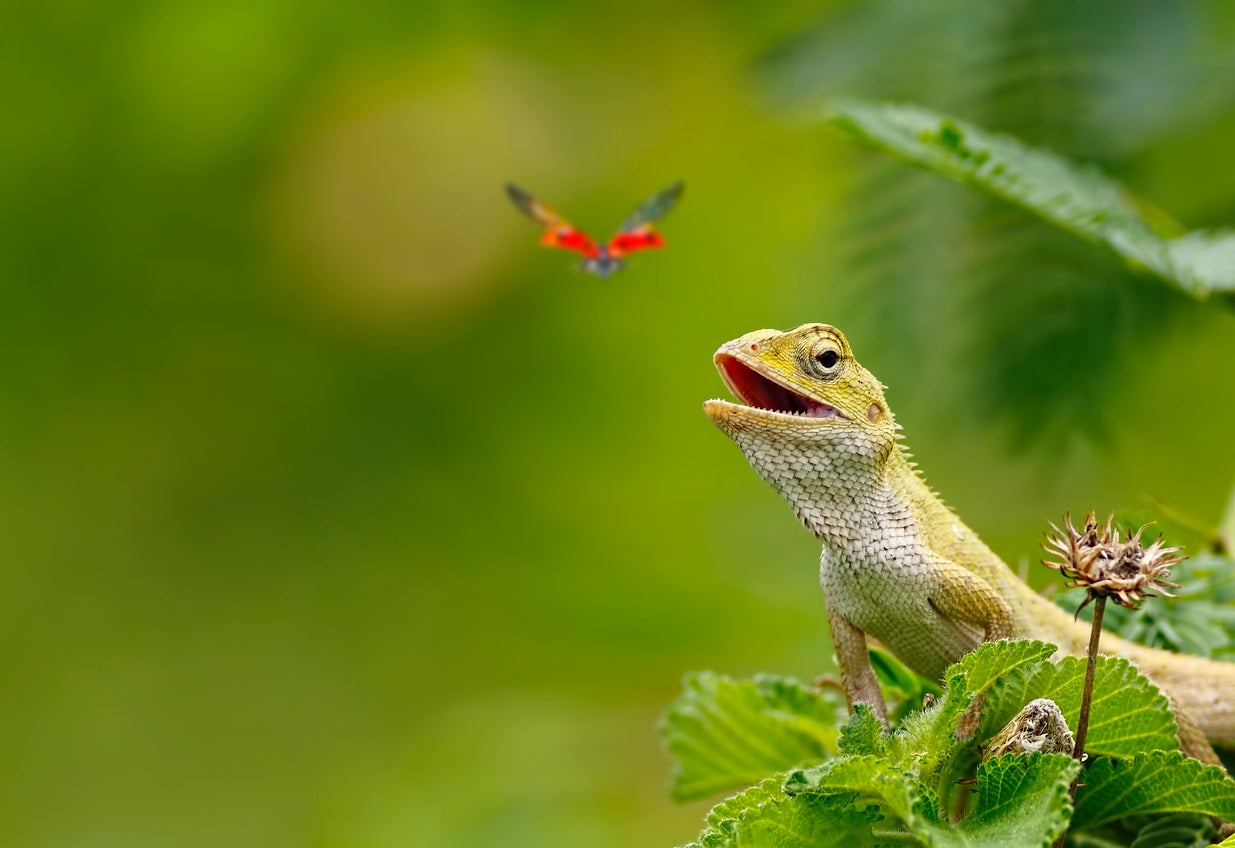Making A Garden For Lizards: How To Attract Lizards To The Garden


You may have never considered this, but attracting lizards to your garden can be beneficial. Like turtles and snakes, lizards are members of the reptile family. Although their physique is similar to salamanders, which are amphibians, lizards have dry scales while salamanders have moist skin.
There are over 6,000 species of lizards worldwide and it's likely that native species of common garden lizards live near you. So why should modern day gardeners take an interest in these scaly remnants from the age of the dinosaurs, as opposed to getting rid of them, and how are lizards good for gardens? Let’s learn more.
Lizard Friendly Gardens
First and foremost, many species of lizards eat garden pests, such as slugs and harmful insects. More importantly, common garden lizards also serve as a barometer of environmental health. Since lizards are vulnerable to pollutants, their mere existence in the garden indicates low levels of pesticides and heavy metals. This ensures food grown in the garden will also have low levels of these particles.
How to Attract Lizards to the Garden
For lizards to take up residency in the backyard, they need an adequate habitat. Creating the right environment is essential for making lizard-friendly gardens. Begin by learning which species of lizards are native in your area. Find out where they lay their eggs, what they eat, and which environmental elements they prefer. The following tips will help gardeners make a safe haven in their garden for lizards:
- Avoid using chemical pesticides. Instead, try natural methods for pest control such as insecticidal soaps, companion planting, and natural predators.
- Avoid using weed killer, especially on the lawn. Spot treat weed problems rather than using wide spread application of weed killer in the yard. Thatching, reseeding, and mowing at recommended heights creates a healthier lawn that will naturally deter weed growth. Weeds in the garden can be hoed or pulled by hand.
- Mulch the garden. It not only deters weeds, but also conserves moisture and creates a humid environment for lizards.
- Give lizards plenty of hiding places. Lizards are low on the food chain. Providing protection from their natural predators ensures their continued existence. Plant bushy perennials, create a rock or brush pile, or use man-made items like stacks of bricks or pipes.
- Include areas for lizards to sun themselves. Large rocks, concrete blocks, or a stone wall absorbs and retains daytime heat for those cool, late summer nights.
- Provide water. This can be achieved by creating a pond, water feature, or even by using a small bowl. Include rocks or sticks as a ramp for lizards to access the water.
Finally, avoid mowing in the evening or at night when reptiles are most active. Keeping pets, like cats, in at night will protect and preserve the common garden lizards that visit your backyard.
Sign up for the Gardening Know How newsletter today and receive a free copy of our e-book "How to Grow Delicious Tomatoes".

Laura Miller has been gardening all her life. Holding a degree in Biology, Nutrition, and Agriculture, Laura's area of expertise is vegetables, herbs, and all things edible. She lives in Ohio.